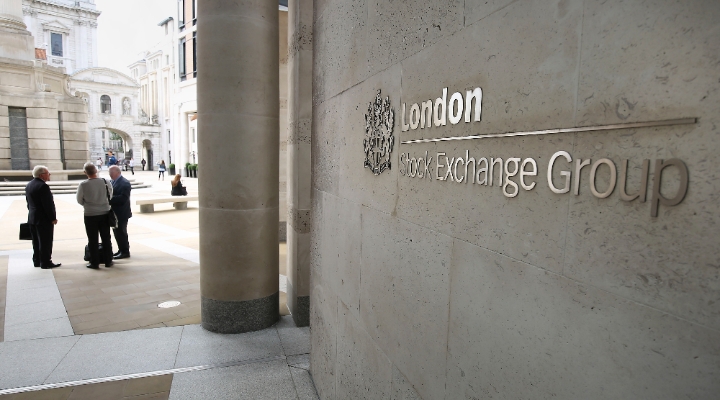Gearing is one of the tools that an investment trust has in its toolkit that, in its traditional sense as a loan, isn’t available to its open-end peers. It tends to provoke a marmite reaction, though—investors either love it or hate it. If used well, gearing can generate extra returns, but used poorly, or when markets are heading south, it can exacerbate losses.
Gearing has garnered something of a tainted reputation. In the 1990s, some trust boards took out long-dated, fixed-term loans to provide long-term, structural gearing for their funds, underpinned by the belief that the returns from equities over the long term would beat those of other asset classes, including cash. For example, in 1991 we saw the board of Witan Investment Trust secure 25-year debt at 8.5%; with the Bank of England base rate well into double figures, on a relative scale that looked attractive. Bankers, City of London, Keystone, Scottish Mortgage, Edinburgh Investment Trust and Merchants Trust all negotiated similar arrangements. But by the mid-Nineties, rates had come down to nearer 6% and by the turn of the century, they were sub-5%. That meant the boards were saddled with expensive debt and the investment managers had to do a fair amount of running just to keep still in their portfolios. Shareholders saw muted returns on their investments because of the scale of the interest payments in servicing that debt.
Of course, no-one expected to see the Bank of England keep rates at less than 1% for four years. So those trusts with expensive, long-dated debentures face an uphill battle to generate returns that beat the cost of servicing that debt—and in all those funds mentioned above, that’s still the case today as the debentures have yet to redeem.
Those long-dated debentures mean gearing can be high and they’re expensive, too. The funds’ boards regularly assess the impact to NAV should they repay the debt early, but it’s rare that it’s in shareholders’ best interests to do so as the hit to NAV would be painful.
However, investment trusts and their boards are good when it comes to innovation, and in recent years we’ve seen new forms of gearing emerge. For example, in 2011 Standard Life UK Smaller Companies Trust issued £25 million of nominal seven-year convertible unsecured loan stock, to replace its bank borrowings. That equates to around 10% gearing for that fund, but manager Harry Nimmo can hold up to 5% in cash to offset this on a tactical view, and he makes good use of this.
Short-term rolling loan facilities have also emerged as a key feature of gearing since the financial crisis. There are a number of trusts using these for gearing purposes. In part this is because banks were unwilling to lend longer-dated money in the immediate aftermath of the financial crisis, but also because short-term rolling loans afford good flexibility to the investment manager. It’s as easy as turning a tap on and off at the right times.
We’re also seeing the investment manager at several funds make use of contracts for difference (CFDs). A CFD is an agreement between two parties to pay the change in price of an underlying asset, without necessitating the purchase of that asset. Not only is this cheap, it’s very flexible as positions can be exited in an instant, irrespective of the liquidity, or illiquidity, of the underlying shares. What’s more, an investment through a CFD doesn’t preclude the manager from receiving any dividend payments made by the underlying company, so there’s no detrimental impact to the fund’s income. In fact, some managers take a CFD position in a stock just prior to the payment of its dividend, to enhance the income received by the trust.
Investment managers aren’t limited to using CFDs only on stocks; they can also take positions on sectors and indices. Should they become cautious on the direction of markets, they can simply exit the position without the need to sell securities and any gearing can rapidly be brought to zero.
In the vast majority of cases, those borrowed monies are invested either in equities, bonds, cash, or a mixture of all three, depending on the extent to which a manager looks to offset any fixed gearing. The newest and most innovative approach to investing borrowed monies is that in use at BlackRock World Mining, where managers Evy Hambro and Catherine Raw have bought two revenue-linked royalty streams from two mining companies—it gives them an income source but also an investment that’s directly linked to commodity prices that complements the existing portfolio of more conventional resources companies.
That being said, tradition hasn’t been scrapped. We’re starting to see a return to long-dated debt at some funds, taken out on the premise that, once again, markets will normalise and long-term opportunities will abound. This time, the rates seem to be much more attractive—for example, Temple Bar has just secured 15-year debt at a rate of 4.05%, but through a private placement, rather than with a bank. We know other fund boards are considering the possibility of longer-dated debt, now that financial institutions are willing to lend to them once again.
Finally, the Association of Investment Companies has simplified the way in which investment trusts report their gearing, so investors can instantly identify the invested funds, ie the net geared position. Gearing adds a layer of complexity but it isn’t automatically a bad thing. We must learn from the past and use that knowledge to our advantage from here on.




























